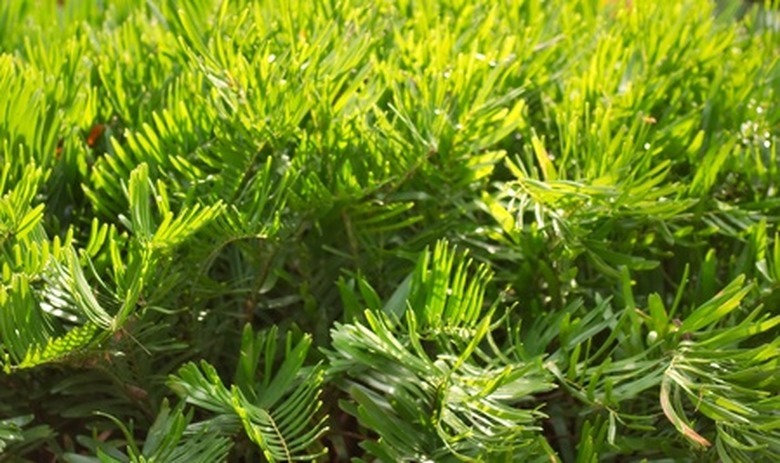How Oxygen Gas Is Produced During Photosynthesis?
Photosynthesis is the process by which plants and some bacteria and protists synthesize sugar molecules from carbon dioxide, water, and sunlight. Photosynthesis can be divided into two stages—the light dependent reaction and the light independent (or dark) reactions. During the light reactions, an electron is stripped from a water molecule freeing the oxygen and hydrogen atoms. The free oxygen atom combines with another free oxygen atom to produce oxygen gas which is then released.
TL;DR (Too Long; Didn't Read)
Oxygen atoms are created during the light process of photosynthesis, and two oxygen atoms then combine to form oxygen gas.
Light Reactions
Light Reactions
The primary purpose of the light reactions in photosynthesis is to generate energy for use in the dark reactions. The energy is harvested from sunlight which is transferred to electrons. As the electrons pass through a series of molecules, a proton gradient is formed membranes. The protons flow back across the membrane through an enzyme called ATP synthase which generates ATP, an energy molecule, used in the dark reactions where carbon dioxide is used to make sugar. This process is called photophposphorylation.
Cyclic and Noncyclic Photophosphorylation
Cyclic and Noncyclic Photophosphorylation
Cyclic and noncyclic photophosphorylation refer to the source and destination of the electron used to generate the proton gradient and in turn the ATP. In cyclic photophosphorlation, the electron is recycled back to a photosystem where it is re-energized and repeats its journey through the light reactions. However, in noncyclic photophosphorylation, the electron's final step is in the creation of an NADPH molecule also used in the dark reactions. This requires the input of a new electron to repeat the light reactions. The need for this electron results in the formation of oxygen from water molecules.
Chloroplasts
Chloroplasts
In photosynthetic eukaryotes such as algae and plants, photosynthesis occurs in a specialized cell organelle called a chloroplast. Within the chloroplasts are thylakoid membranes that provide an internal and external environment for photosynthesis. The thylakoid membranes are present in all photosynthetic organisms, bacteria included, but only eukaryotes house these membranes within chloroplasts. Photosynthesis begins in photosystems located within the thylakoid membranes. As the light reactions of photosynthesis progress, protons are packed within the membrane spaces creating a proton gradient across the membrane.
Photosystems
Photosystems
Photosystems are complex structures of involving pigments located within the thylakoid membrane that energize electrons using light energy. Each pigment is attuned to a specific portion of the spectrum of light. The central pigment is chlorophyll ? which serves an additional role of gathering the electron that is used in subsequent light reactions. Within the center of chlorophyll ? are ions that bind to water molecules. As chlorophyll energizes an electron and sends the electron outside the photosystem to waiting receptor molecules, the electron is replaced from the water molecules.
Oxygen Formation
Oxygen Formation
As electrons are stripped from water molecules, the water is broken into component atoms. The oxygen atoms from two water molecules combine to form diatomic oxygen (O2). The hydrogen atoms, which are single protons missing their electrons, aid the creation of the proton gradient within the space enclosed by the thylakoid membrane. The diatomic oxygen is released and the chlorophyll center binds to new water molecules to repeat the process. Due to the reactions involved, four electrons must be energized by the chlorophyll to generate a single molecule of oxygen.
Cite This Article
MLA
Chandler, David. "How Oxygen Gas Is Produced During Photosynthesis?" sciencing.com, https://www.sciencing.com/oxygen-gas-produced-during-photosynthesis-6365699/. 5 April 2018.
APA
Chandler, David. (2018, April 5). How Oxygen Gas Is Produced During Photosynthesis?. sciencing.com. Retrieved from https://www.sciencing.com/oxygen-gas-produced-during-photosynthesis-6365699/
Chicago
Chandler, David. How Oxygen Gas Is Produced During Photosynthesis? last modified March 24, 2022. https://www.sciencing.com/oxygen-gas-produced-during-photosynthesis-6365699/
